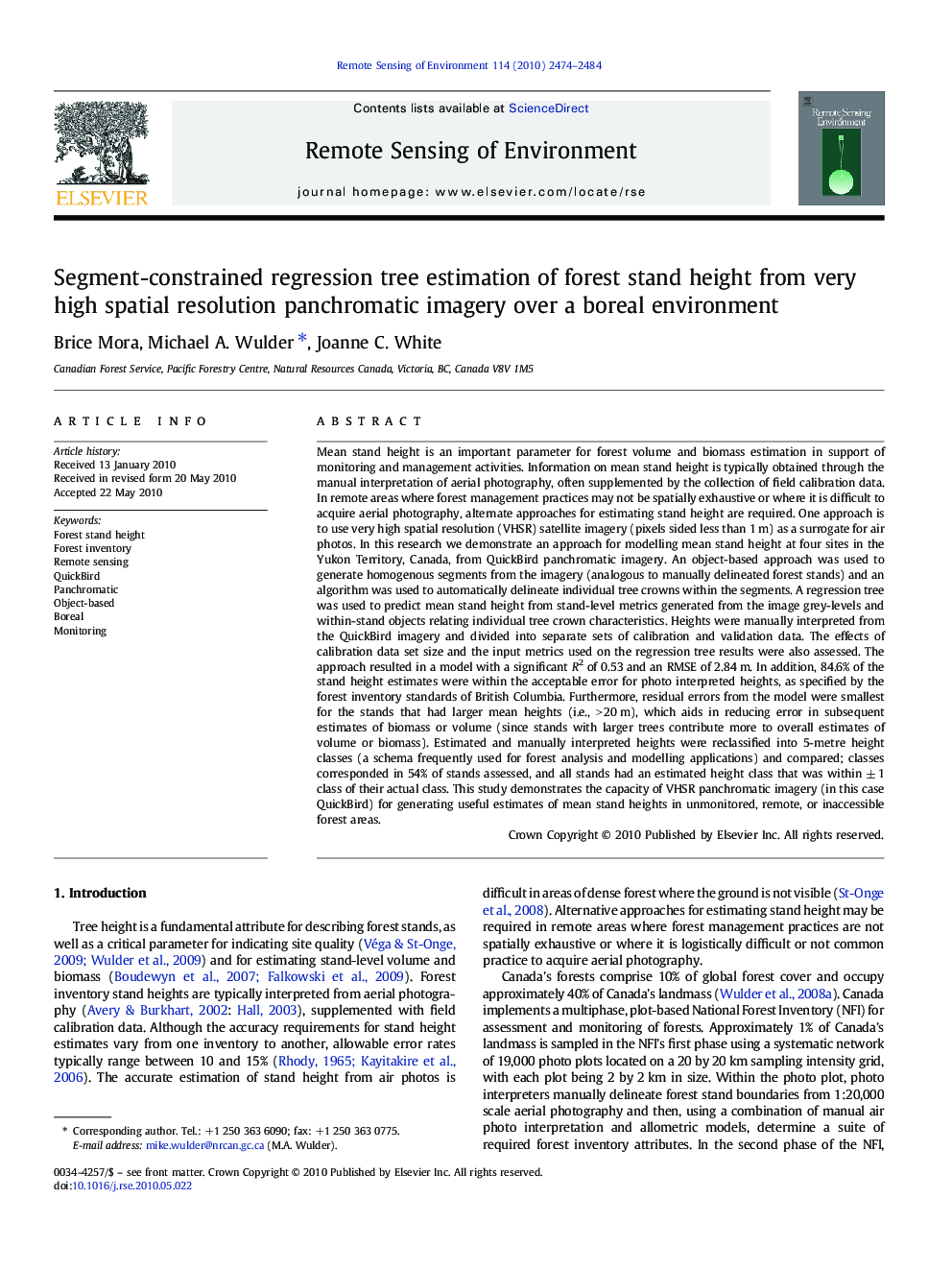| کد مقاله | کد نشریه | سال انتشار | مقاله انگلیسی | نسخه تمام متن |
|---|---|---|---|---|
| 4459824 | 1621298 | 2010 | 11 صفحه PDF | دانلود رایگان |

Mean stand height is an important parameter for forest volume and biomass estimation in support of monitoring and management activities. Information on mean stand height is typically obtained through the manual interpretation of aerial photography, often supplemented by the collection of field calibration data. In remote areas where forest management practices may not be spatially exhaustive or where it is difficult to acquire aerial photography, alternate approaches for estimating stand height are required. One approach is to use very high spatial resolution (VHSR) satellite imagery (pixels sided less than 1 m) as a surrogate for air photos. In this research we demonstrate an approach for modelling mean stand height at four sites in the Yukon Territory, Canada, from QuickBird panchromatic imagery. An object-based approach was used to generate homogenous segments from the imagery (analogous to manually delineated forest stands) and an algorithm was used to automatically delineate individual tree crowns within the segments. A regression tree was used to predict mean stand height from stand-level metrics generated from the image grey-levels and within-stand objects relating individual tree crown characteristics. Heights were manually interpreted from the QuickBird imagery and divided into separate sets of calibration and validation data. The effects of calibration data set size and the input metrics used on the regression tree results were also assessed. The approach resulted in a model with a significant R2 of 0.53 and an RMSE of 2.84 m. In addition, 84.6% of the stand height estimates were within the acceptable error for photo interpreted heights, as specified by the forest inventory standards of British Columbia. Furthermore, residual errors from the model were smallest for the stands that had larger mean heights (i.e., > 20 m), which aids in reducing error in subsequent estimates of biomass or volume (since stands with larger trees contribute more to overall estimates of volume or biomass). Estimated and manually interpreted heights were reclassified into 5-metre height classes (a schema frequently used for forest analysis and modelling applications) and compared; classes corresponded in 54% of stands assessed, and all stands had an estimated height class that was within ± 1 class of their actual class. This study demonstrates the capacity of VHSR panchromatic imagery (in this case QuickBird) for generating useful estimates of mean stand heights in unmonitored, remote, or inaccessible forest areas.
Journal: Remote Sensing of Environment - Volume 114, Issue 11, 15 November 2010, Pages 2474–2484